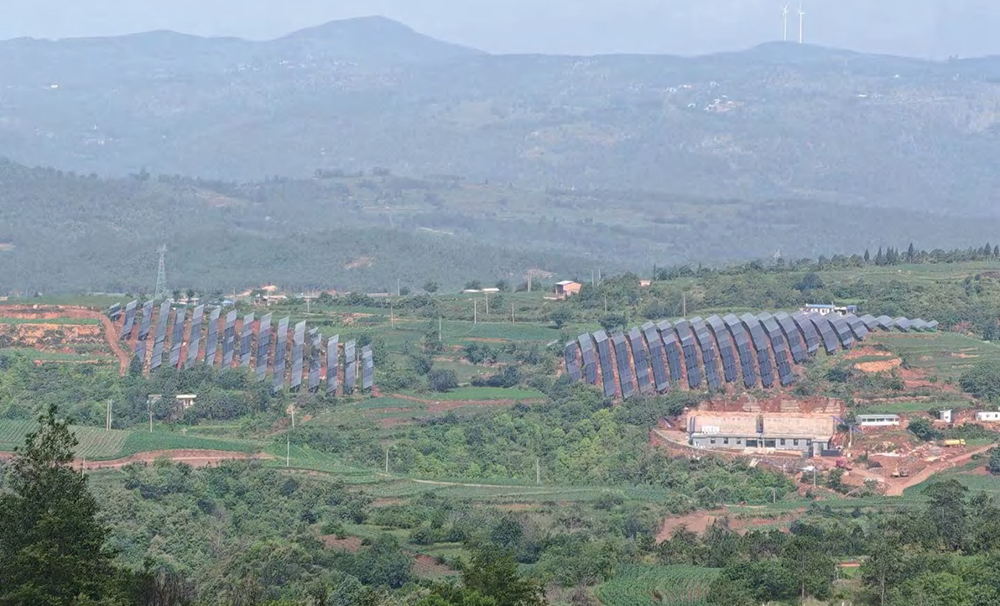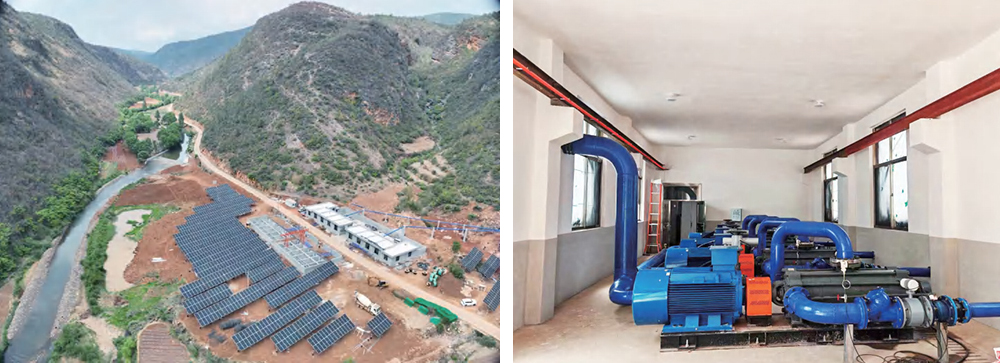Borrowing Sunlight to Draw Water – A Solar Irrigation Project Bringing water to mountain and irrigate16,500 Acres of Fertile Land in China
In the mountainous landscapes of Xuanwei City, China, rows of solar panels glisten under the scorching sun, silently and steadily converting sunlight into electricity. This clean energy powers a network of water pump units, drawing water from the Xize River and transporting it hundreds of meters uphill to irrigate thousands of acres of farmland—bringing much-needed relief to thirsty crops.
In recent years, Xuanwei has faced consecutive winter-spring droughts, leading to severe water shortages for agricultural production. Traditional electric irrigation systems are costly, and in remote mountainous regions, farmers have had to rely on diesel-powered pumps or agricultural vehicles to transport water—an inefficient, labor-intensive, and expensive process.

Fortunately, the region is rich in solar resources and has access to the Xize River, which provides a stable supply of clean water. Leveraging these natural advantages, the local government initiated an innovative solar-powered irrigation project, replacing the traditional electro-mechanical pumping stations. Once completed, this project will resolve irrigation challenges across 100,000 Mu(approximately 16,500 acres) of high-standard farmland, benefiting 37 villages in 6 towns. It will also help revitalize nearby farmland in dam areas and promote sustainable agricultural development.
The project’s solar pumping stations are equipped with intelligent systems that dynamically adapt to solar conditions. They automatically adjust the number of operating pump units based on sunlight intensity, ensuring optimal use of solar energy. Even during cloudy or rainy days, individual units can continue generating electricity and lifting water under low-light conditions.

Advanced energy management and MPPT (Maximum Power Point Tracking) control technologies are integrated into the solar water pump system. These allow for precise control and energy distribution across multiple inverters, enabling each pump unit to operate efficiently and independently—without being constrained by terrain, weather, or the need for energy storage or grid connection. Remote start and stop functions via GPRS ensure seamless monitoring and control.
Notably, the project features the largest solar pump inverters and pump units in China, with a single inverter rated at 350 kW. The system sets national benchmarks across multiple parameters: total installed solar power capacity, number of pump units, daily water lifting volume, and complexity of control systems. It achieves a remarkable water flow rate of 0.4 cubic meters per second and a total lifting head of 826 meters—both of which are rare achievements in similar solar irrigation systems worldwide.
This pioneering project stands as a shining example of how modern technology and renewable energy can reshape agriculture, offering a scalable, sustainable solution for water-scarce farming regions.
Post time:2025-04-14





